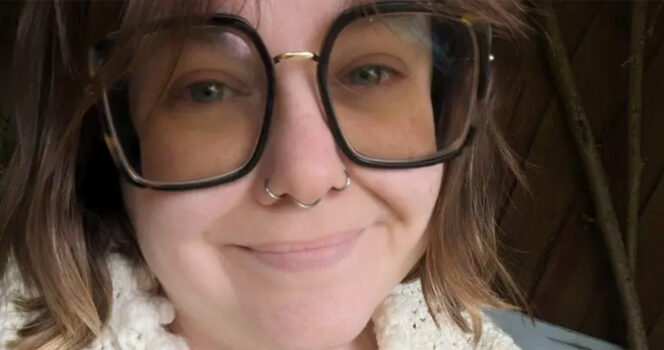Woman Shares 30-Year Journey to Discovering She’s Abrosexual
Attraction doesn’t always fit neatly into one category. For some, it shifts and evolves over time — an experience that’s far more common than many realize. This fluid pattern of attraction is known as abrosexuality.
A Three-Decade Journey
Writer Emma Flint opened up about her experience in a heartfelt personal essay for Metro UK in July 2024. After three decades of questioning and confusion, Flint finally found a word that captured her ever-changing feelings: abrosexual.
Now 32, Flint reflected on years of struggling to define herself. At times, she believed she was a lesbian. Later, she noticed attraction toward men. Sometimes, she felt no attraction at all. And just as suddenly, the cycle would begin again.
Shining Light on an Overlooked Identity
Her story highlights how misunderstood abrosexuality can be — and how lonely the journey of self-discovery often feels without the right language. By speaking out, Flint hopes to show others that fluctuating attraction is valid, real, and worthy of recognition.
View this post on Instagram
Woman Shares 30-Year Journey to Discovering She’s Abrosexual
Attraction doesn’t always fit neatly into one category. For some, it shifts and evolves over time — an experience that’s far more common than many realize. This fluid pattern of attraction is known as abrosexuality.
A Three-Decade Journey of Self-Discovery
Writer Emma Flint opened up about her experience in a heartfelt personal essay for Metro UK in July 2024. After three decades of questioning and confusion, Flint finally found a word that captured her ever-changing feelings: abrosexual.
“I felt lost, like I was drifting at sea,” said Flint, a freelancer from Staffordshire, England. “I also felt like a fraud because my identity seemed to change depending on who I was talking to.”
For years, she wrestled with the shifts. “It wasn’t that I couldn’t make up my mind — it was that my identity kept moving,” she explained. “One day I’d feel certain I was a lesbian, then days or weeks later, I’d feel more aligned with bisexuality. My sexuality was fluid.”
The turning point came when she discovered the term abrosexual in an online forum. “Finally,” she writes, “I felt seen.”
What Is Abrosexuality?
Abrosexuality is a lesser-known LGBTQ+ identity that reflects sexual fluidity. According to Healthline, an abrosexual person experiences sexual attraction that shifts over time. They might feel attraction toward one gender at one point, toward all genders at another, or sometimes experience little to no sexual attraction at all.
Unlike terms such as homosexual, bisexual, heterosexual, or pansexual — which describe the genders someone is attracted to — abrosexuality doesn’t specify gender. It simply refers to the fact that sexual attraction changes over time.
Flint adds her personal perspective: “I love the person, rather than their gender, so it doesn’t matter if my sexuality fluctuates while I’m with them.”
She also acknowledges the challenges of explaining her identity. “Even after explaining this, there are always some people who insist I ‘pick a lane’ so my identity doesn’t offend them. I want people to know that just because you don’t understand an identity doesn’t make it any less real.”
What Abrosexuality Can Look Like
There’s no single way to be abrosexual — the experience is unique for everyone. Healthline offers examples of how abrosexuality might appear in everyday life:
-
Day-to-day shifts: Feeling attracted exclusively to men one day, then only women the next.
-
Gradual changes: Experiencing attraction to all genders for weeks or months, then feeling drawn to one specific gender.
-
Fluctuating attraction levels: Going through periods of little to no sexual attraction — sometimes described as asexual feelings — before attraction returns, possibly toward different genders.
-
Long-term evolution: Identifying as straight for years, then later realizing an attraction toward other genders emerges, reshaping your sense of identity.
These are just snapshots of possible experiences. There’s no “one-size-fits-all” when it comes to being abrosexual, and that’s what makes this identity deeply personal and unique.
#NewProfilePic pic.twitter.com/3v66GpX6At
— Em (@LiterateElf) April 1, 2025
“We’re all learning new things about ourselves all the time — that’s what growth and development is about,” Flint writes. “I hope that, eventually, abrosexuality will be seen as just another identity someone might have — normal, valid, and not mistaken for being ‘on trend.’”
Her story is more than a personal journey; it’s a powerful reminder of how important language and representation are in helping people understand themselves. Many go through life feeling “broken” or “out of place” simply because they haven’t yet found the words that capture their experiences.
What are your thoughts on identities like abrosexuality? Share your perspective and pass this story along — let’s start the conversation.

